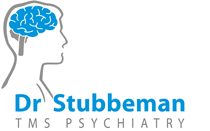
Category Archives: Research


Did You Know There Are 4 Different Types of Depression?
Depression therapies range from lifestyle methods such as talk therapy and exercise, medicinal treatments such as prescription antidepressants, medical treatments such as transcranial magnetic stimulation or, in particularly tough cases, electroshock therapy. Up until now, deciding which therapies would work best for which patient has been a matter of trial and error, but this new Cornell research will help doctors match the type of depression someone has to the best treatment for that version specifically.
Stimulating the brain can bring back forgotten short-term memories
Some hopeful news for those who can’t remember new people’s names: stimulating the brain with a magnetic pulse can bring back forgotten short-term memories, as long as we know that we’ll need that information later.
Brain stimulation guides people through an invisible maze
You’re stuck in a maze. You can’t see the walls, or the floor. All you have to navigate is a device on your head stimulating your brain to tell you which way to go. In an experiment at the University of Washington in Seattle, participants solved a maze puzzle guided only by transcranial magnetic stimulation (TMS). The findings suggest that this type of brain prompt could be used to augment virtual reality experiences or help give people who are blind “visual” information about their surroundings.
Transcranial direct current stimulation shows promise for depression therapy
Small amounts of electricity similar to the output of a common 9-volt battery could improve life for people living with major depression, the most common mood disorder. A new study at the University of Kansas will investigate the potential of transcranial direct current stimulation, or tDCS, whereby a safe, low current of electricity is applied to the brain by placing electrodes on a person's scalp. The painless technique may be a useful as a therapy for depression, especially in conjunction with antidepressant medications.
Self-Control Isn’t Just Controlling Impulses, but Also Changing Perspective
This theory was tested using transcranial magnetic stimulation to disrupt the function of the pTPJ in two separate studies on volunteer subjects from the University of Zurich. The disruption of this subregion of the brain would ultimately indicate if the subjects still held their capacity of self-control or if they became selfish and impulsive. The first study investigated 43 subjects who performed two tasks.
The effect of subthreshold transcranial magnetic stimulation on the excitation of corticospinal volleys with different conduction times
Previous studies in humans interested in inhibitory synaptic activity at the level of the primary motor cortex (M1) have frequently used an electrophysiological technique call short intracortical inhibition (SICI). This technique consists of two subsequent pulses with transcranial magnetic stimulation (TMS)...
How Transcranial Magnetic Stimulation over Early Visual Cortex impacts short-term memory precision and guess rate
Neuroimaging studies have demonstrated that activity patterns in early visual areas predict stimulus properties actively maintained in visual short-term memory. Yet, the mechanisms by which such information is represented remain largely unknown.
Transcranial direct current stimulation may activate the human cerebral cortex, study shows
The notion that low levels of electrical stimulation applied to the scalp, barely enough to create a mild tingling sensation, could activate the brain is a relatively new and somewhat controversial idea.
